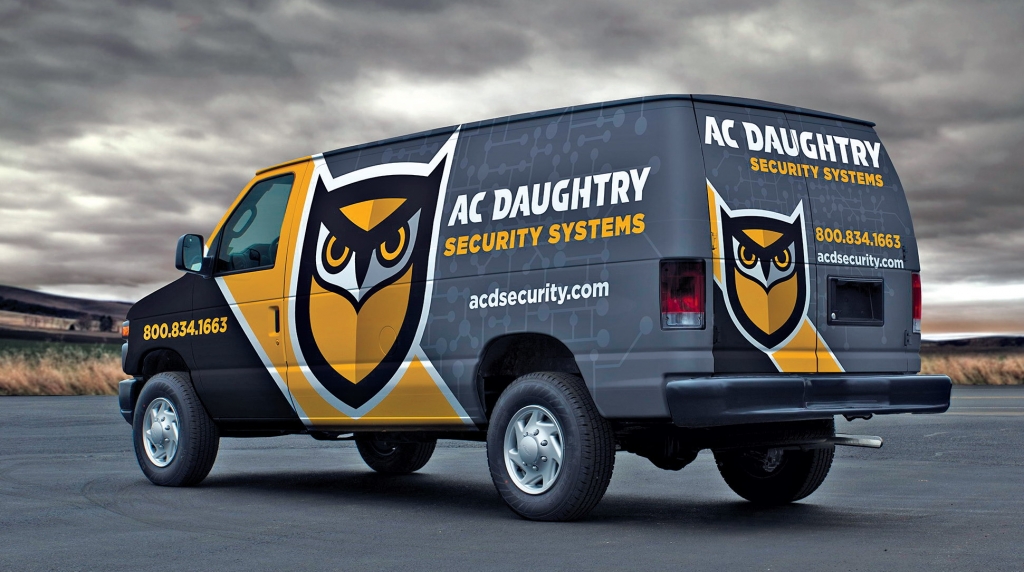Dan Antonelli opened his shop, Graphic D-Signs (Washington, NJ), in 1995. In 2003, Antonelli pur-
chased his first digital printer and began fabricating partial wraps. In 2007, he had a revelation: Antonelli realized his shop wasn’t organized appropriately for installation, and he chose to focus solely on design.
He’s shared his vehicle-wrap-design mastery with more than 1,000 signshops and end users, and has written three design-related books. Antonelli’s most recent effort, Building a Big Small Business Brand, which was published last year, addresses the importance of small businesses developing a brand. Here, he answers a few questions about the importance of developing a brand that can carried from a wrap to signs and other collateral promotional media.
How is designing wraps like designing signs? How is it different?
It’s similar to signage in that identification must fully revolve around branding. However, for vehicle fleets, wraps differ because the sign must be implemented across different types of vehicles, which may require different dimensions. Don’t design yourself into a corner; make sure your program carries seamlessly across different “canvases.”
What makes a wrap unsuccessful? How can it be corrected?
Most wraps are too tough to read, and don’t make branding the core function. There are too many effects – Photoshop glows, bevels and confusing images – that cloud the message. Wraps should be about the brand. Period. Avoid photos; they say what a company does, but not who it is. None of the last 100 wraps we’ve designed use a photo.
What are key considerations for a successful wrap brand?
Distance legibility is so important. Use simple, iconic marks that give the viewer an easy association with your business type. Also, use atypical color schemes, which will help brand recognition. Always design a logo completely before you consider integrating it across different platforms. Treat the logo as a supergraphic on the side of a truck. This becomes the primary component of your brand, and it becomes easy to carry across other promotional elements – signs, stationery, other printed materials – as a focal point.
What suggestions do you have to optimize fonts and typographic elements?
Never rely on outlines, shadows or other effects to make copy legible. If you do, your layout has issues from the start. Don’t lay type over photography, and avoid fonts with a wide disparity in stroke weight, or scripts that are hard to read. Convert your whole layout to grayscale, and make sure there’s enough contrast between elements. Limit your copy to logo, tagline, and photo and web contacts. A good brand doesn’t require a lot of copy.
Advertisement
How do you employ software and templates?
We only design in vectors, so we use Adobe Illustrator. I think if most designers gave up Photoshop and worked in vector-based art exclusively, their wrap designs would be more effective. Great wraps are simplified to basic elements. Adding more visual components hurts legibility and effectiveness. We use vector-based templates and pictures of plain, white vehicles as backdrops to create photo-realistic mock-ups for clients.
What’s been one of your favorite wrap-design projects?
That’s a tough question, but I’d rank our recent rebranding for AC Daughtry, a home-security company, as a favorite. The simple, iconic use of a logo that’s strongly integrated on the vehicles says a lot about them. With such a strong logo, their 10-truck fleet provides the perception that they’re on par with ADT, Brinks and other national companies. If you don’t design a wrap to look like a fleet, with a minimal text and a prominent logo, the customer’s company looks smaller.
Vehicle Wrap Project of the Day Archive
May 1: Way of Wade Yacht Wrap



 Tip Sheet3 days ago
Tip Sheet3 days ago
 Business Management1 week ago
Business Management1 week ago
 Women in Signs2 weeks ago
Women in Signs2 weeks ago
 Real Deal4 days ago
Real Deal4 days ago
 Editor's Note1 week ago
Editor's Note1 week ago
 Line Time2 weeks ago
Line Time2 weeks ago
 Product Buying + Technology1 week ago
Product Buying + Technology1 week ago
 Women in Signs4 days ago
Women in Signs4 days ago









